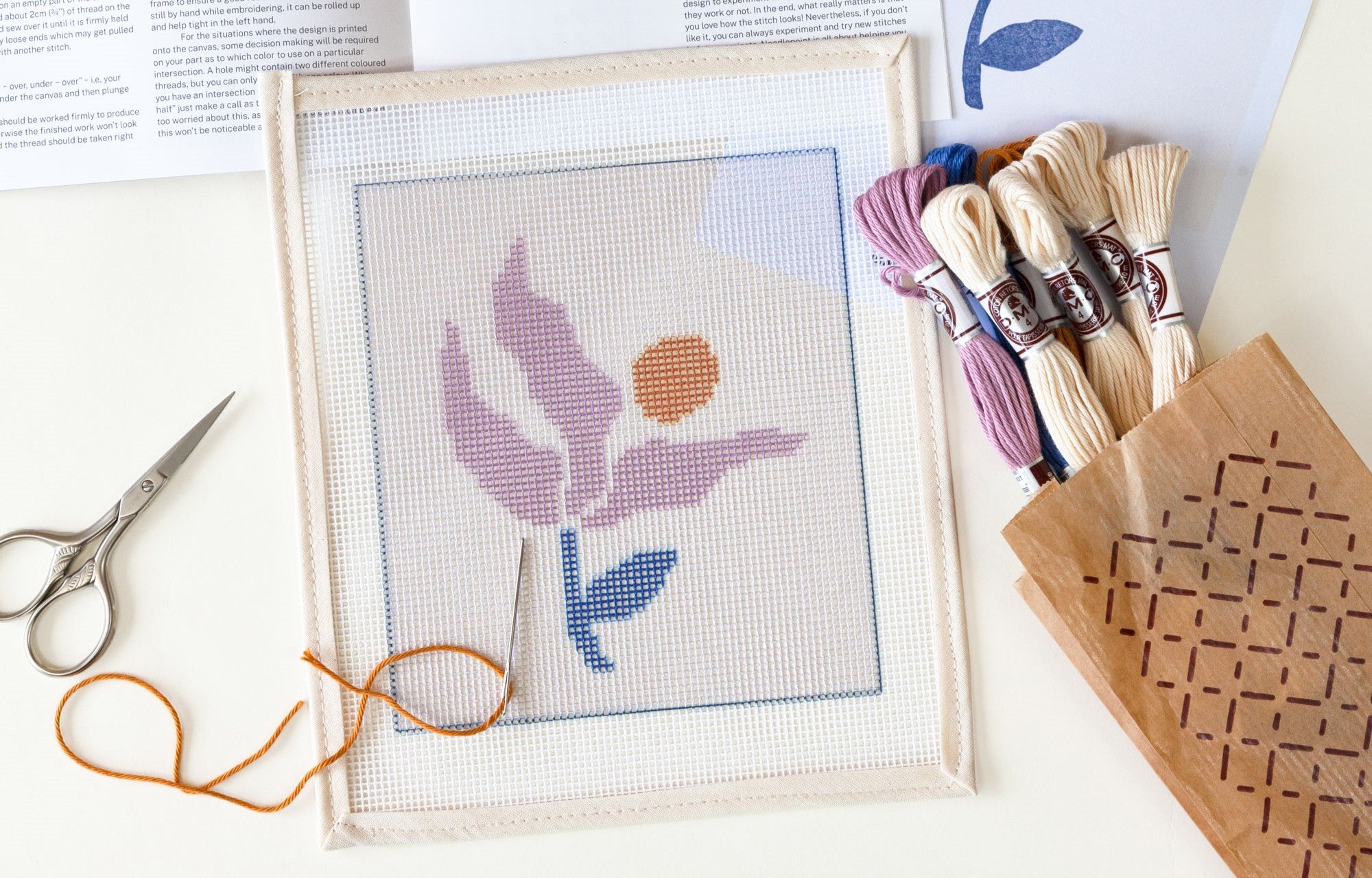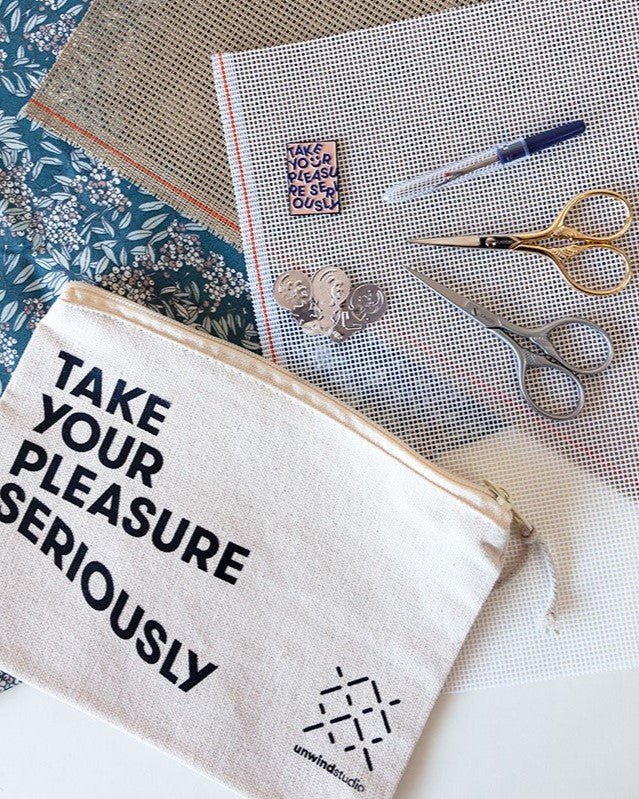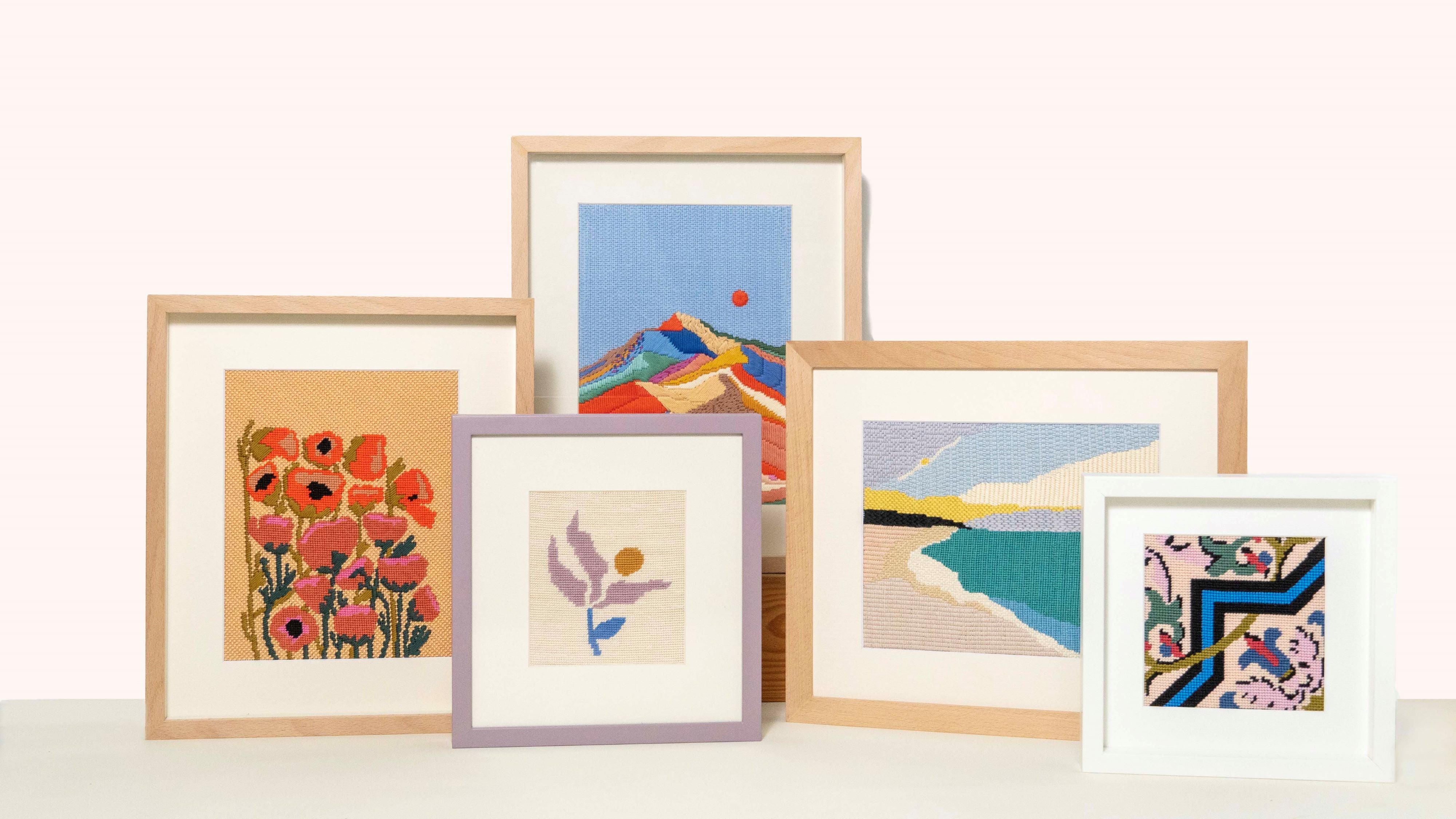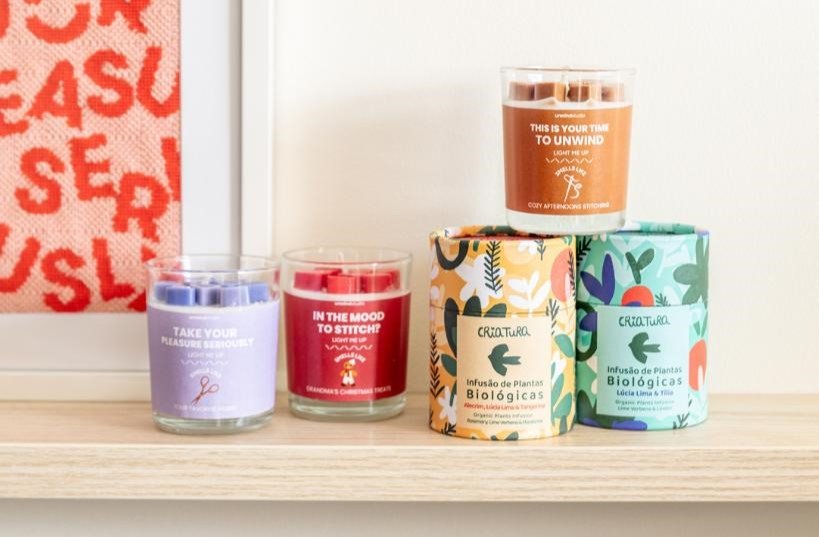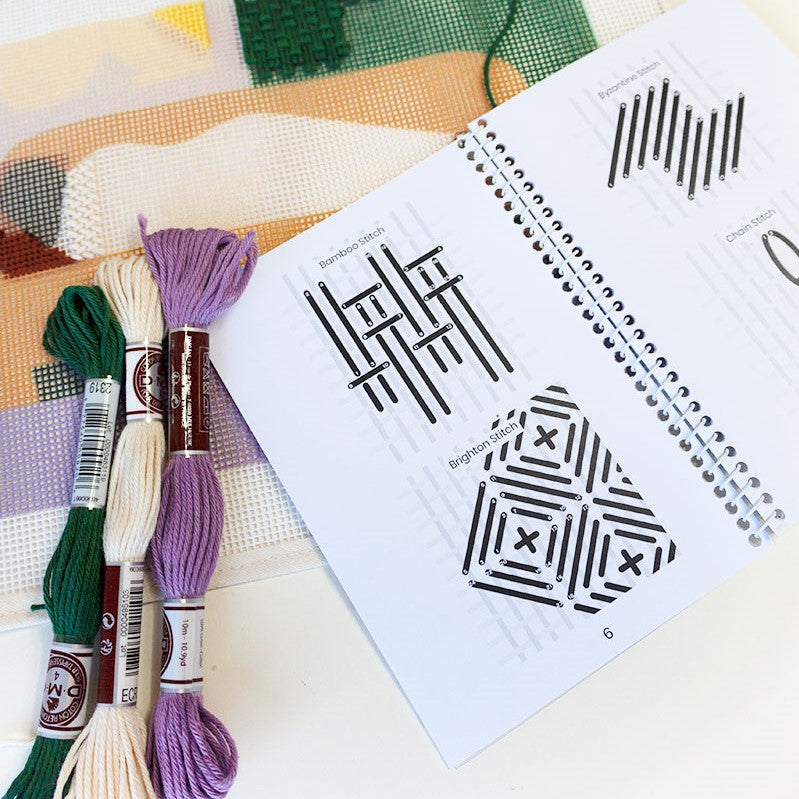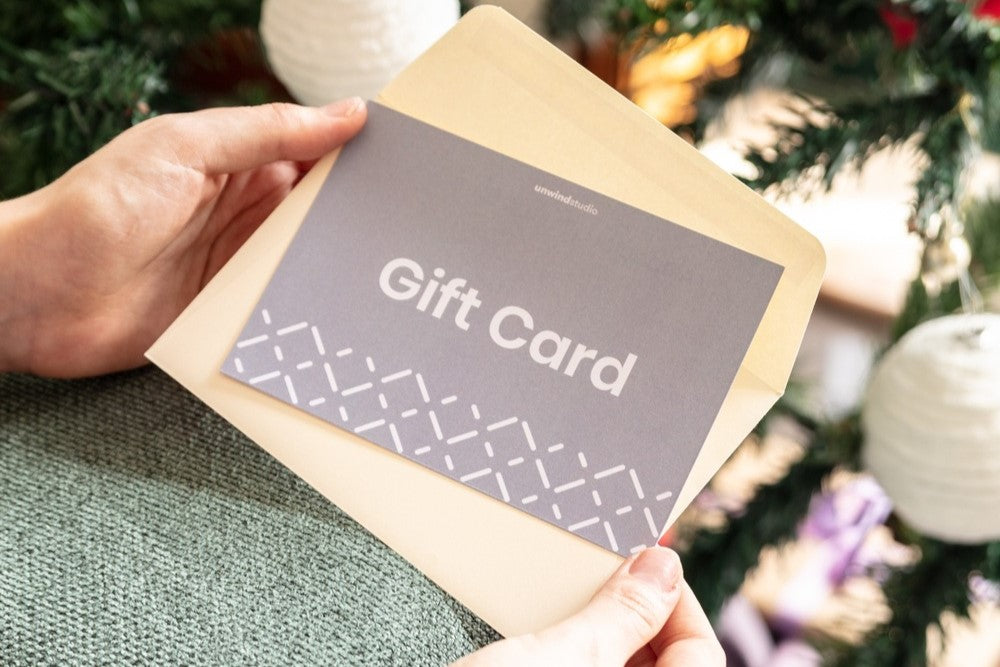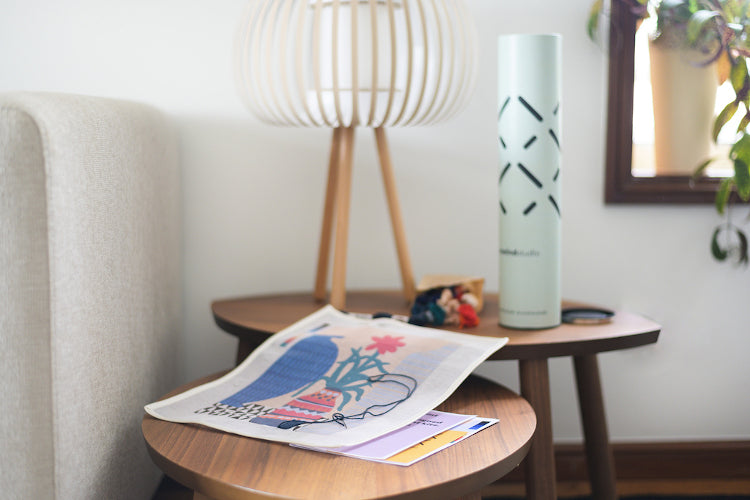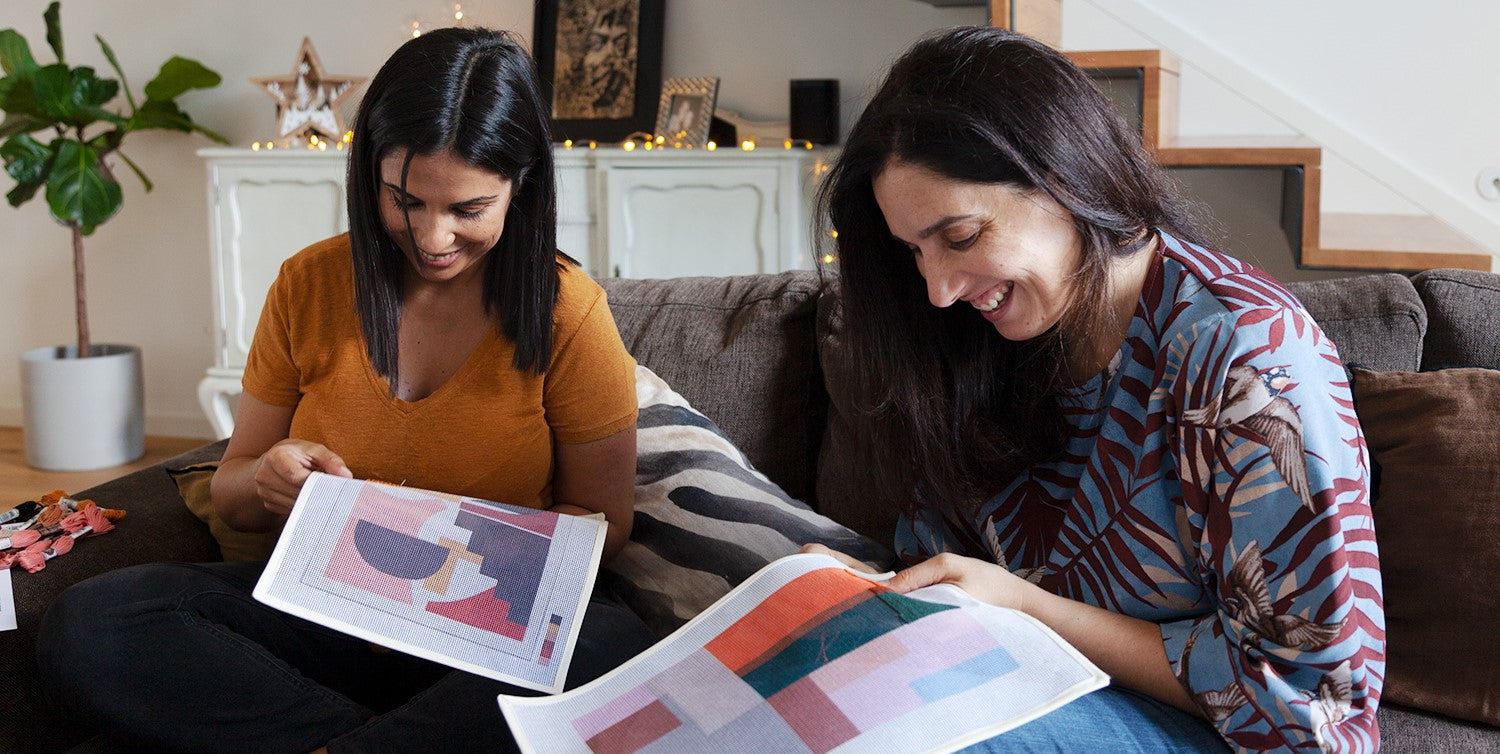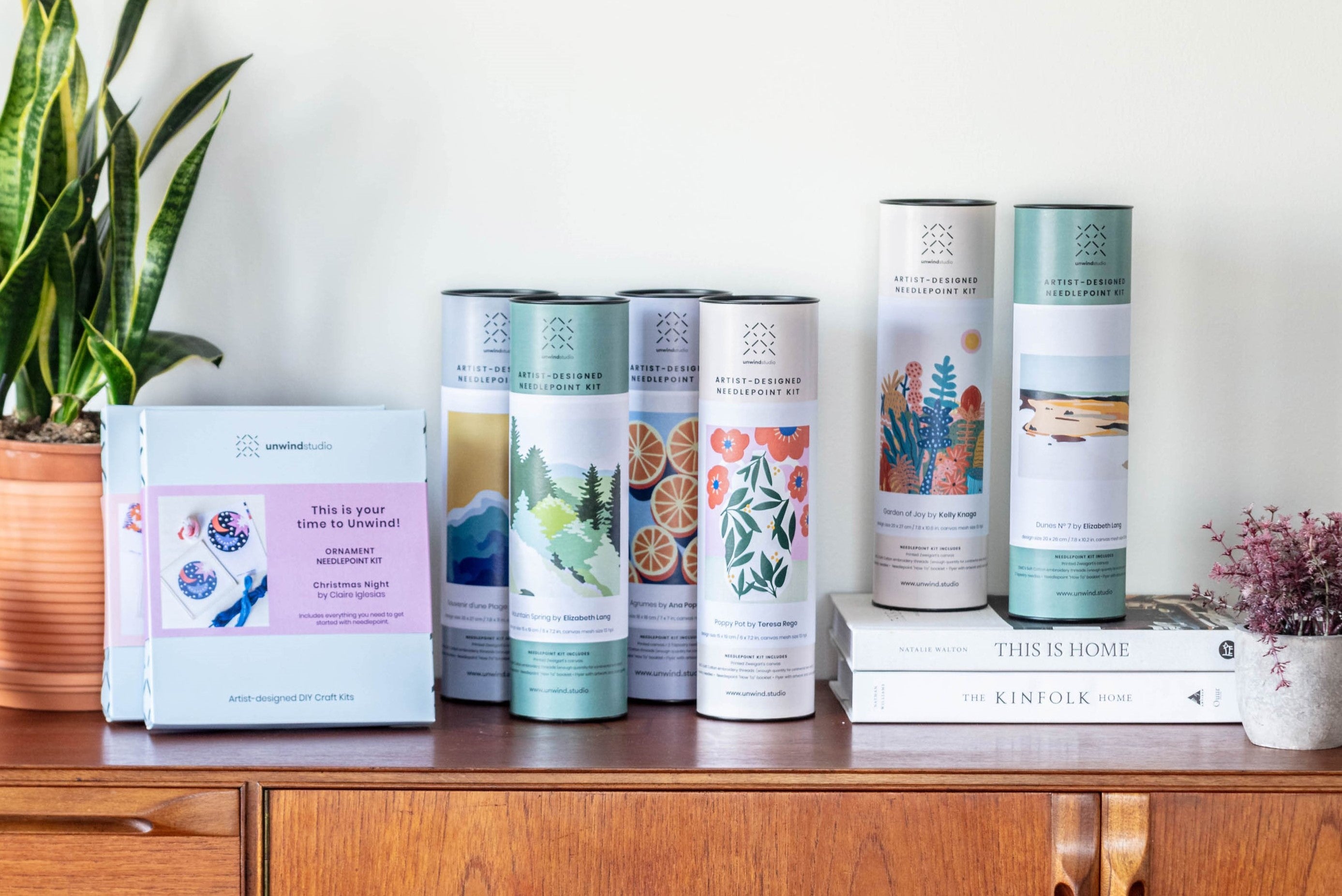Sewing 101 for Needlepoint Finishing: A Beginner's Guide
Welcome to our beginner's guide to sewing with a machine! If you've ever wanted to try but felt intimidated, this beginner's tutorial is for you. Sewing is not as difficult as it may seem, and it's a fantastic skill to have for various projects, especially for finishing large needlepoint projects.
In this blog post, we'll walk you through the basics of sewing, giving you all the instructions and tips you need to get started. Once you feel confident, you can explore our specific needlepoint finishing tutorials to apply what you've learned.
Before we dive in, check out our detailed step-by-step video tutorial to help you visualize the process.
Sewing 101 for Needlepoint Finishing - Video Tutorial
Materials needed to get started with a Sewing Machine
- Thread of matching color of the fabric you will sew
- Bobbin for the machine
- Needles for the machine (universal size works)
- Pins/clips (to help during the sewing process)
- Sewing Machine: basic models are sufficient for needlepoint finishing
Recommended Sewing Machines for Needlepoint Finishing
In our video tutorial we are using our beloved Singer Tradition 2250, which is recommended for total beginners. It's was the first machine we bought 5 years ago, and it still works perfectly for our finishing projects!
We are currently using every day a Singer Heavy Duty to bind all our canvases with cotton fabric (a bit of machine upgrade, for a faster job), but we relied for almost 3 years, sewing every week day, solely on our first machine. At the time, easy of use and cost were the main considerations to select our machine.
If you are going to use the sewing machine solely for needlepoint finishing projects, then we definitely recommend investing in a cheaper sewing machine - under 150€ / $150 is enough.
Here's a great blog post that explains in detail how to find the best affordable sewing machines.
3 Reasons Why You Should Invest in a Sewing Machine
1. It's a cheaper investment, if you compare with the cost of sending your needlepoint project to be finished by professionals. Your first project most probably won't look 100% perfect, but you will improve this skill over time, and you can proudly say that you did all by yourself!
2. You will learn a new skill that will allow you to explore other textile crafts / hobbies you have been wanting to try!
3. Investing in a sewing machine is a significant step toward a more sustainable lifestyle. It allows you to mend and upcycle old clothing, reducing waste and the need for new purchases. Additionally, sewing your own garments encourages the use of eco-friendly materials and supports slow fashion, which prioritizes quality and environmental impact over mass production.
Anatomy of a Basic Sewing Machine
It's important to understand more or less how a sewing machine works, we will get into the instructions next but take this image as a guide to come back to if you don't understand some terms or where to find the mechanism we're referring to.
Detailed Instructions on how to get started with a Sewing Machine
1. Filling in the Bobbin
-
Insert Thread into the Bobbin:
- Take the end of your thread and pass it through the hole in the bobbin, from inside outwards.
- Hold the thread end and wrap the thread around the bobbin a few times to secure it.
-
Position the Bobbin:
- Place the bobbin on its designated spot on the sewing machine and push it to the right to allow it to spin.
- Follow the machine's instructions to secure the thread, usually involving a screw or hook.
- Press the pedal to transfer the thread to the bobbin, holding it gently to avoid tangling but allowing it to spin freely.
2. Threading the Needle
-
Place the Thread on the Spool Holder:
- The spool holder is typically located on the top of the machine.
- Pull out a length of thread and follow the machine's numbered instructions or visual cues to thread the needle.
-
Follow the Thread Path:
- Pull the thread through the first hook, bring it down, then back up.
- Use the hand wheel on the machine's right side to make the needle move and reveal a silver hook at the top.
- Secure the thread around the hook, bring it back down, and pass it through the last hook.
-
Thread the Needle:
- Pass the thread through the needle’s hole from front to back.
- Bring it towards you and pass it under the presser foot.
4. Positioning the Bobbin
-
Insert the Bobbin:
- Open the bottom section of the machine and remove the bobbin holder.
- Place the bobbin in the holder and pull the thread through the side slit until it clicks into place.
-
Align the Bobbin Holder:
- Fit the bobbin holder back into its slot, aligning the lever perfectly.
- Fit the bobbin holder back into its slot, aligning the lever perfectly.
-
Bring the Bobbin Thread Up:
- Use the hand wheel to move the needle up and down, pulling the top thread around the bobbin to pick up the bottom thread.
- Pull the bobbin thread up with scissors and close the bottom section.
5. Sewing Machine Settings
-
Select the Stitch Type:
- Use the adjustment system to choose a basic stitch, which is most commonly used for needlepoint projects.
- Use the adjustment system to choose a basic stitch, which is most commonly used for needlepoint projects.
-
Set the Stitch Length:
- Adjust the stitch length between 3 and 4, which is suitable for most needlepoint projects.
- Adjust the stitch length between 3 and 4, which is suitable for most needlepoint projects.
-
Adjust the Tension:
- Set the Tension Control Dial to 8, a setting that works well for simple projects.
6. Start Sewing
Very Important: ensure the presser foot lever is down when sewing to keep the fabric in place.
-
Position Your Fabric:
- Place your needlepoint canvas under the presser foot and guide it with your hand to maintain a straight line.
-
Begin Sewing:
- Press the pedal slowly, adjusting your speed as needed.
- Continue sewing until you reach a corner, then lift the presser foot lever, turn the fabric, and lower the lever to continue.
-
Secure the Stitches:
- At the end of your sewing, press the reverse lever to lock the stitches.
- Raise the needle, remove the fabric, and cut the thread using the thread cutter or scissors.
Conclusion
Congratulations! You've completed your first sewing project. Remember, perfection is not the goal—practicing and improving is what counts. With these basic skills, you're ready to tackle various needlepoint finishing projects with a sewing machine.
Explore our other finishing tutorials for more detailed guides on how to create different needlepoint projects.
Happy stitching!!


